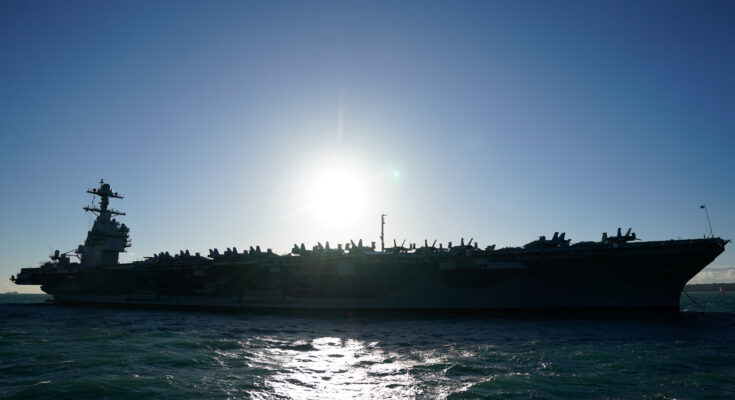I. Personnel Coverage:
1. Health Insurance for Navy Personnel
A Comprehensive Guide to Insurance for the US Navy Just like civilians, Navy personnel require comprehensive health insurance to cover medical expenses. While active-duty military members receive healthcare through the Tricare system, additional coverage options may be necessary for dependents and retirees.
2. Life Insurance for Naval Personnel
The nature of naval operations involves inherent risks, and life insurance is a vital component to provide financial protection for Navy personnel and their loved ones. This subsection explores the types of life insurance available, including Servicemembers’ Group Life Insurance (SGLI) and Veterans Group Life Insurance (VGLI).
3. Disability Insurance for Navy Personnel
Disability insurance is crucial for Navy personnel, considering the physical demands and potential risks associated with military service. This part of the guide delves into disability insurance options, including coverage for service-related disabilities and ensuring financial support in case of injuries or disabilities.
II. Asset Protection:

1. Ship and Equipment Insurance
Naval vessels and equipment represent significant investments, and insurance is paramount to protect against potential damages, losses, or accidents. This section explores the complexities of insuring naval assets, covering considerations such as hull insurance, machinery insurance, and protection and indemnity (P&I) insurance.
2. Property Insurance for Naval Bases
Naval bases, with their infrastructure and facilities, require property insurance to safeguard against damages caused by natural disasters, accidents, or other unforeseen events. This subsection discusses the importance of property insurance for naval installations and the specific coverage needs associated with military bases.
3. Cyber Insurance for Naval Operations
In the era of digital warfare, cyber threats pose a significant risk to naval operations. This part of the guide examines the necessity of cyber insurance to protect against cyberattacks, data breaches, and other cyber threats that could compromise sensitive information and operations.
III. Unique Challenges and Considerations:
1. Deployment Considerations
Navy personnel frequently deploy to various regions around the world. This section explores the unique insurance considerations during deployments, including coverage for overseas operations, international waters, and the complexities of insurance in different jurisdictions.
2. War Risk Insurance
Naval operations may involve exposure to war zones or regions with elevated security risks. War risk insurance becomes crucial in such scenarios, covering potential damages or losses resulting from acts of war, terrorism, or political instability.
3. Specialized Coverage for Military Equipment
Military equipment, including specialized naval assets, requires unique insurance coverage. This part of the guide delves into the specialized insurance options available for military equipment, addressing the challenges of insuring technologically advanced and mission-specific assets.
IV. The Role of Government Programs:

1. Tricare and Military Health System
Tricare, the healthcare program for military personnel, plays a central role in providing health coverage. This section explores the features and coverage options under Tricare, highlighting its significance in ensuring the health and well-being of Navy personnel.
2. Government Risk-Sharing Programs
The government offers risk-sharing programs to support military operations. This subsection discusses programs such as the Defense Finance and Accounting Service (DFAS) and the Defense Base Act (DBA), which play integral roles in managing risks associated with military service.
V. Insurance Compliance and Regulations:
1. Compliance with Military Regulations
The military operates within a framework of regulations, and compliance with these regulations is crucial for insurance coverage. This section outlines the regulatory landscape for insurance in the US Navy, including requirements set forth by the Department of Defense (DoD) and other relevant authorities.
VI. Future Trends and Innovations:

1. Technological Advancements in Naval Operations
As naval operations evolve with advancements in technology, the insurance landscape must adapt accordingly. This part of the guide explores how technological innovations, such as autonomous vessels and advanced surveillance systems, may impact insurance requirements for the US Navy.
2. Data Analytics and Risk Management
The integration of data analytics in risk management is becoming increasingly important. This section examines how data analytics can enhance risk assessment and management for the US Navy, potentially influencing insurance strategies and coverage.
Conclusion:
Insurance for the US Navy is a multifaceted and dynamic field, addressing the unique challenges faced by naval personnel and the complex nature of naval operations. From health and life coverage for personnel to asset protection for naval vessels and installations, the comprehensive guide navigates through the intricacies of insurance tailored for the esteemed branch of the military. As technology and geopolitical landscapes continue to evolve, so too will the insurance strategies and solutions that safeguard the security and well-being of the US Navy.





One Comment on “A Comprehensive Guide to Insurance for the US Navy”